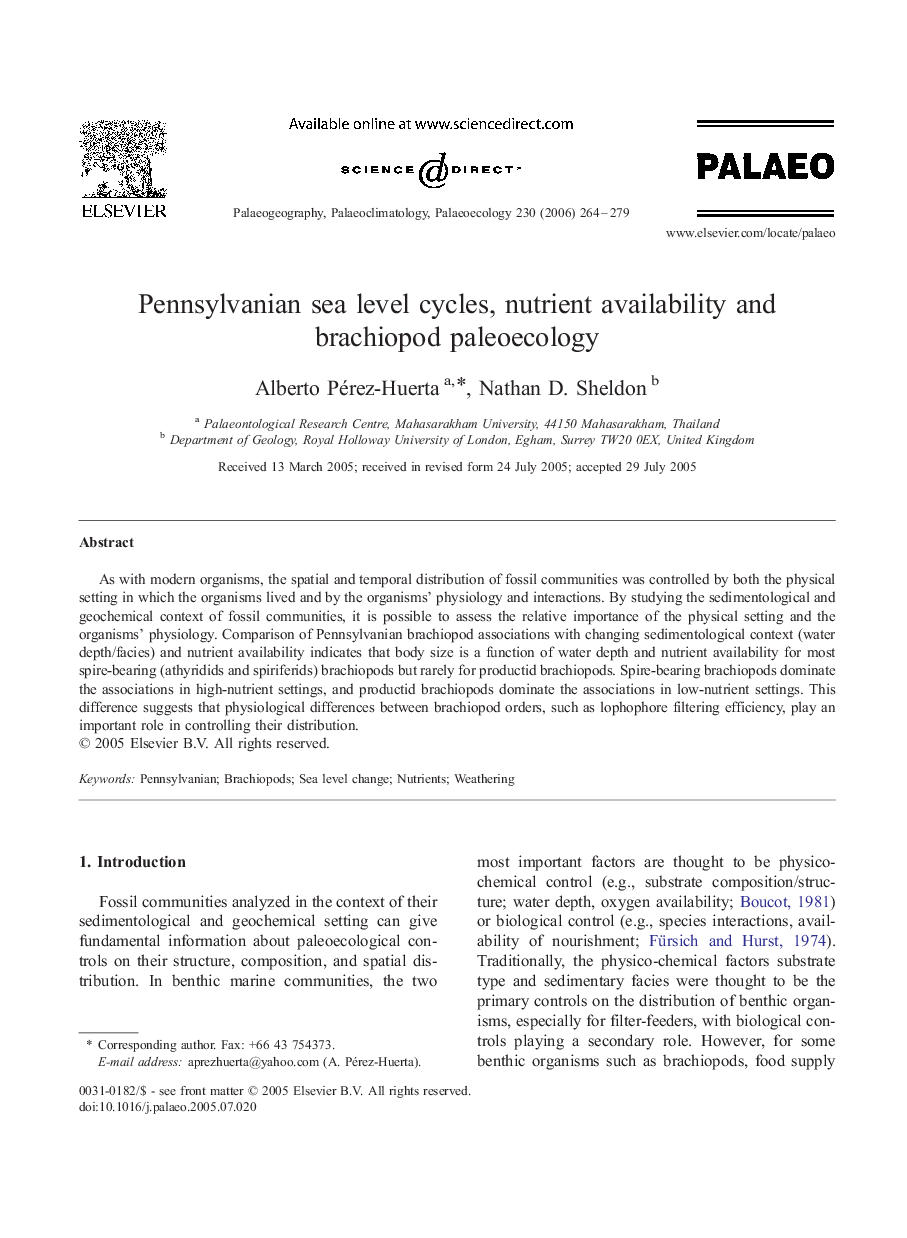| Article ID | Journal | Published Year | Pages | File Type |
|---|---|---|---|---|
| 4469545 | Palaeogeography, Palaeoclimatology, Palaeoecology | 2006 | 16 Pages |
As with modern organisms, the spatial and temporal distribution of fossil communities was controlled by both the physical setting in which the organisms lived and by the organisms' physiology and interactions. By studying the sedimentological and geochemical context of fossil communities, it is possible to assess the relative importance of the physical setting and the organisms' physiology. Comparison of Pennsylvanian brachiopod associations with changing sedimentological context (water depth/facies) and nutrient availability indicates that body size is a function of water depth and nutrient availability for most spire-bearing (athyridids and spiriferids) brachiopods but rarely for productid brachiopods. Spire-bearing brachiopods dominate the associations in high-nutrient settings, and productid brachiopods dominate the associations in low-nutrient settings. This difference suggests that physiological differences between brachiopod orders, such as lophophore filtering efficiency, play an important role in controlling their distribution.
